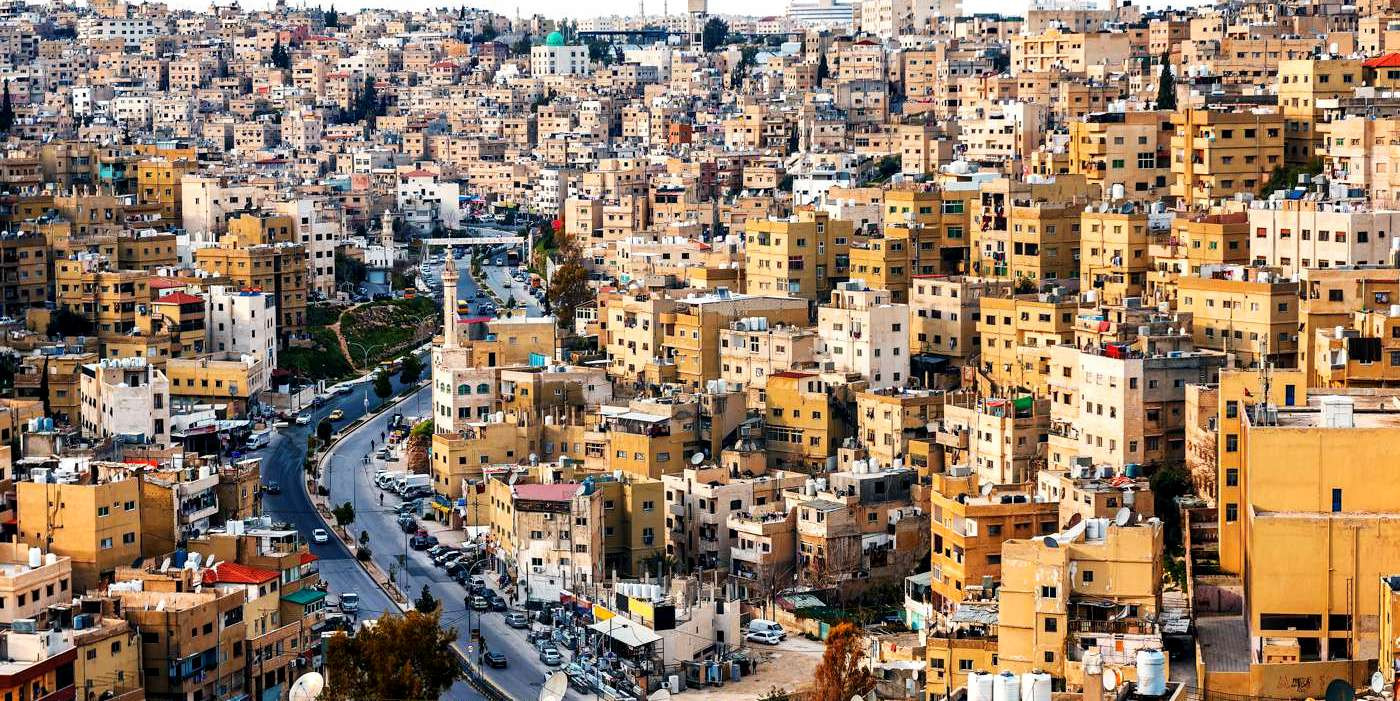Amman
Amman, the capital of Jordan, is a fascinating city that beautifully meshes the ancient with the modern, making it a compelling destination for travelers. Known for its sprawling hills and diverse population, Amman offers a unique blend of old and new. Here are some highlights and key attractions of the city:
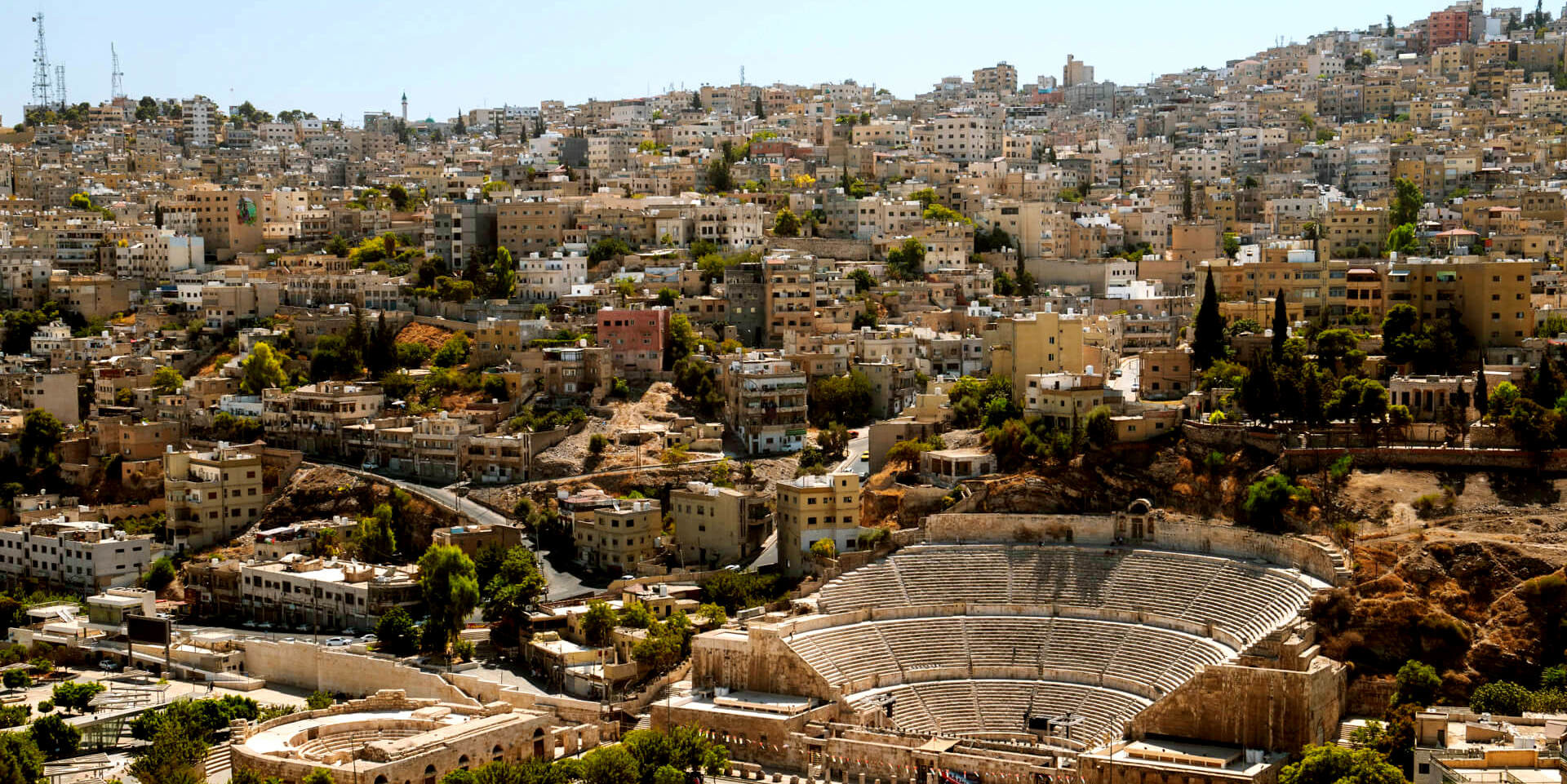
Historical and Cultural Sites
-
The Citadel: Situated on one of the highest hills in Amman, this ancient site includes the remains of the Roman Temple of Hercules, the Umayyad Palace, and a Byzantine church, offering panoramic views of the sprawling city below.
-
Roman Theatre: A striking 6,000-seat, 2nd-century Roman amphitheater which is still in use today for performances, demonstrating the ongoing cultural vitality of the city.
Modern Attractions
-
Rainbow Street: This vibrant street is lined with cafes, shops, and galleries, and is a focal point for both day and night activities. It's a perfect place to sample local cuisine, shop for crafts, or simply enjoy the bustling atmosphere.
-
Abdali Boulevard: A newly developed part of Amman that showcases contemporary Jordan with its sleek architecture, luxury apartments, high-end shops, and international restaurants.
Cultural Experience
-
Jordan Museum: Located in the Ras Al-Ain area of Amman, this museum is home to some of the country's most important archaeological finds, including ancient scrolls from the Dead Sea and the Ain Ghazal statues, some of the oldest human statues ever found.
Dining and Cuisine
Natural Beauty
- King Hussein Park: One of the largest parks in the city, King Hussein Park is a great spot for families and individuals to relax and enjoy the greenery, especially during the spring and summer months.
Amman serves as a gateway to the country and a cultural and political hub. Its complex history, combined with rapid modern development, provides visitors with a rich and varied experience that highlights Jordan's past and future. Whether exploring ancient ruins or enjoying the amenities of modern life, Amman offers something for every traveler.
Petra
Petra, often described as the "Rose City" due to the color of the stone from which it is carved, is one of Jordan’s most renowned historical and archaeological cities. This ancient Nabatean city, now a UNESCO World Heritage site and one of the New Seven Wonders of the World, attracts tourists from all over the globe with its breathtaking beauty and fascinating history.
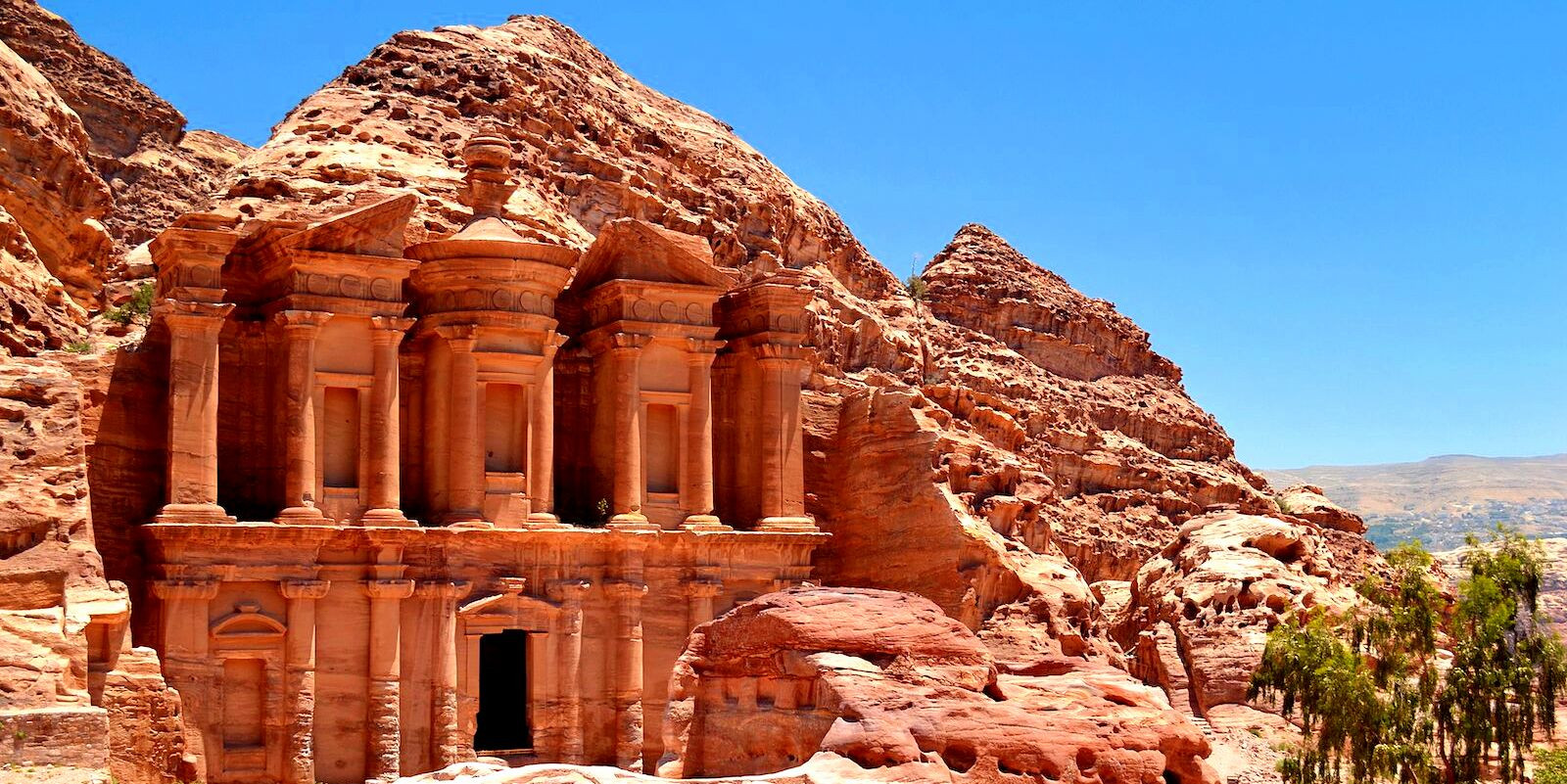
Key Highlights of Petra
-
The Siq: The main entrance to Petra is a narrow gorge over a kilometer in length, flanked on either side by soaring, 80-meter high cliffs. The walk through the Siq itself is one of the many awe-inspiring experiences Petra offers.
-
The Treasury (Al-Khazneh): This is perhaps the most iconic structure in Petra, featured famously in films such as "Indiana Jones and the Last Crusade." Originally built as a mausoleum and crypt at the beginning of the 1st century AD, its intricate facade is carved directly out of the rock face, demonstrating the advanced engineering skills of the Nabateans.
-
The Monastery (Ad Deir): Larger than the Treasury, the Monastery is similarly impressive and requires a climb of 800 steps carved out of the mountain to reach it. The effort is rewarded with stunning views of the surrounding area and the structure itself.
-
The Royal Tombs: A series of large tombs with impressive facades carved into the southern cliff face that overlooks the center of Petra. They provide insight into the architectural innovation and creativity of the Nabateans.
-
The Theatre: Carved into the side of the mountain at the foot of the High Place of Sacrifice, the theatre could seat about 3,000 people, showcasing the communal life of the ancient city.
Experiences in Petra
-
Petra by Night: This tour allows visitors to see the Treasury lit by candlelight, an ethereal experience that highlights the dramatic façade against the darkened sky.
-
Hiking and Trekking: Petra offers a range of hiking trails that vary in difficulty, including paths leading to high vantage points overlooking the Treasury and routes to less-visited, equally impressive monuments like the High Place of Sacrifice.
Petra’s significance extends beyond its architectural and historical marvels. It is a testament to the ingenuity of the Nabateans who made the harsh desert landscape their home and managed trade routes that included spices, silk, and other valuable commodities. Visiting Petra provides not just a glimpse into an ancient world, but also an appreciation for what human creativity and resilience can achieve.
Aqaba
Aqaba, Jordan's only coastal city, is situated at the northeastern tip of the Red Sea and is renowned for its warm, inviting waters and picturesque landscapes. As a strategic port and popular resort town, Aqaba plays a crucial role in Jordan's economy and is a favored destination for both relaxation and adventure.
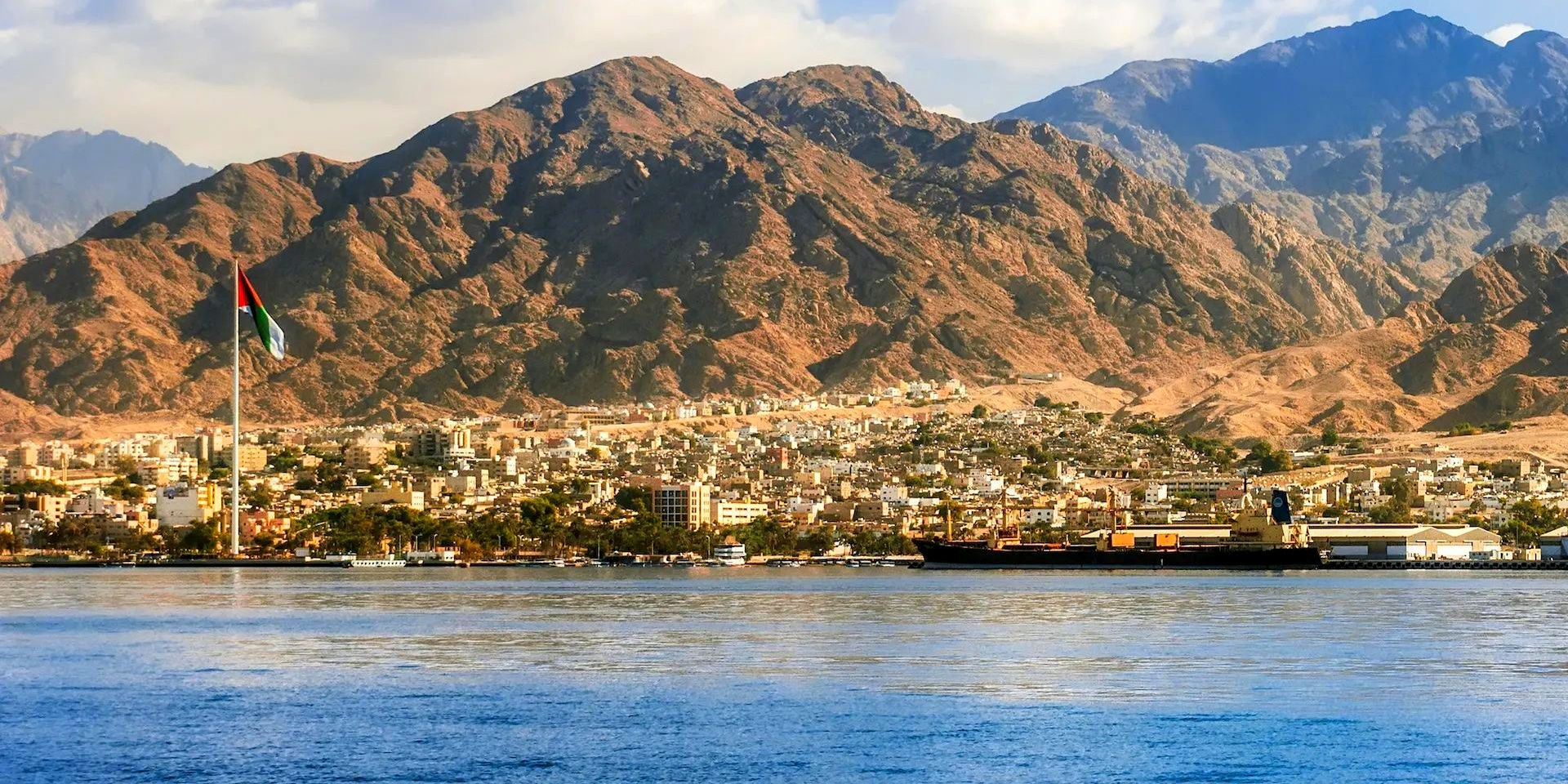
Key Highlights of Aqaba
-
Marine Life: Aqaba is famous for its vibrant coral reefs and diverse marine life, making it a premier destination for snorkeling and scuba diving in the Red Sea. The Aqaba Marine Park is a protected area that offers some of the best underwater experiences, with well-preserved coral reefs and an array of colorful fish.
-
Beaches: The city boasts several beautiful beaches that offer a mix of private resort beaches and public sands. Tala Bay and Berenice Beach are among the top choices for visitors seeking sun, sea, and sand, with excellent facilities for a comfortable day out.
-
Historical Sites: Aqaba is not just about water sports and beach life; it also has a rich history. Aqaba Castle, also known as Aqaba Fort, dates back to the 14th century and played a significant role during the Arab Revolt. The Aqaba Archaeological Museum within the fort premises displays artifacts that trace the city's history.
Activities in Aqaba
-
Water Sports: Beyond snorkeling and diving, Aqaba offers a plethora of water activities such as windsurfing, jet skiing, and parasailing. The calm waters of the Red Sea make it an ideal spot for both beginners and seasoned enthusiasts.
-
Aqaba Bird Observatory: For nature lovers, the Aqaba Bird Observatory provides an opportunity to observe migratory birds on their route between Africa and Europe. It's a serene place to appreciate wildlife and the natural beauty of the area.
-
Shopping and Dining: Aqaba is also known for its lively shopping scene, with local markets offering everything from traditional handicrafts to gold jewelry. Seafood restaurants along the coast offer fresh catches of the day, cooked in distinctive Middle Eastern styles, providing a delicious way to end a day of adventure.
Aqaba's combination of historical significance, modern leisure facilities, and natural beauty makes it a unique destination within Jordan. Whether you're exploring underwater life, relaxing on the beach, or indulging in local cuisine, Aqaba offers a refreshing escape with something for everyone.
Jerash
Jerash, located in the north of Jordan, is one of the best-preserved Roman provincial towns in the world. Known for its grand ruins that vividly showcase the urbanism, architecture, and cultural landscapes of the Roman, Byzantine, and early Islamic eras, Jerash offers visitors a unique window into ancient civilizations.
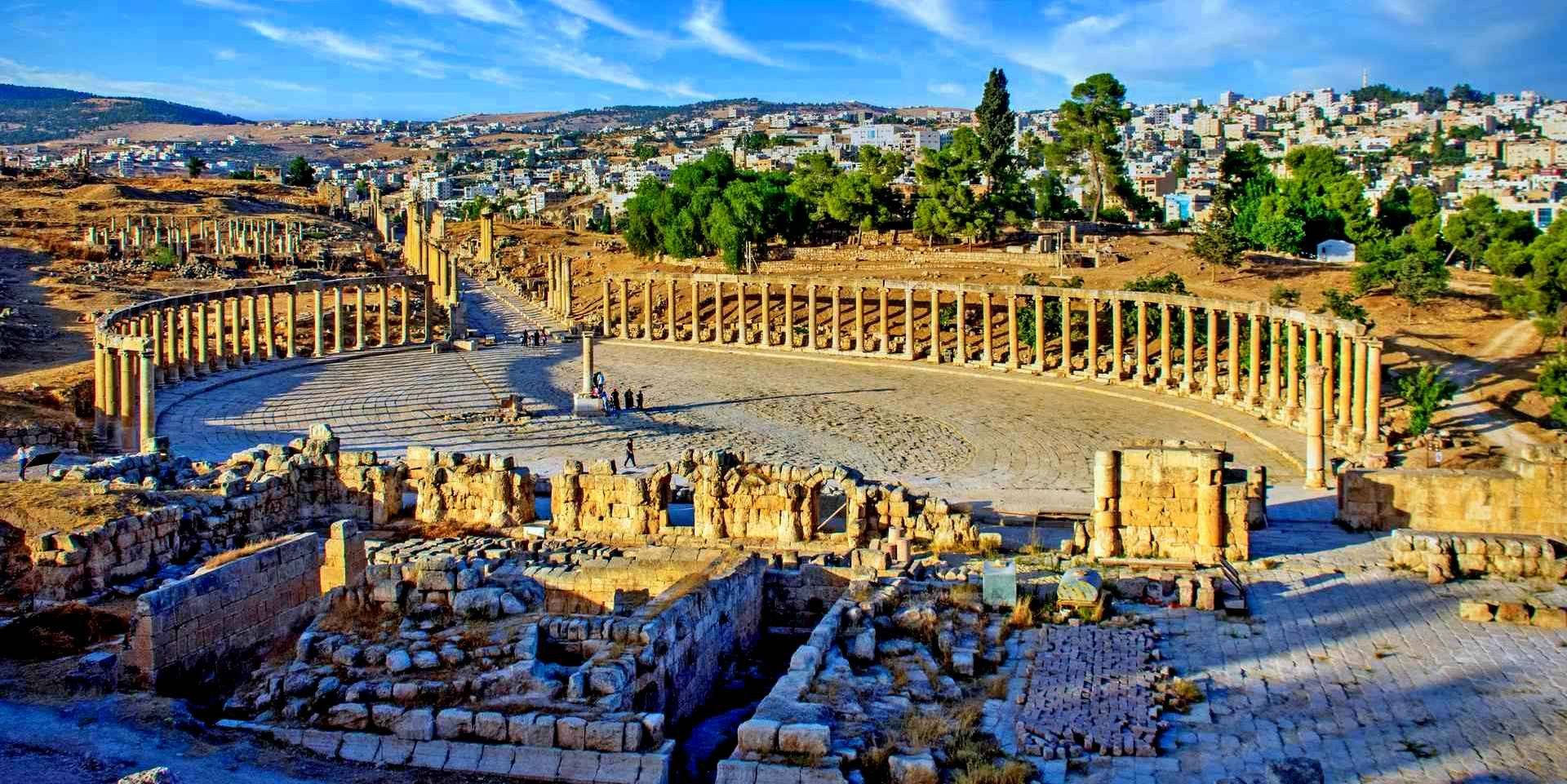
Key Highlights of Jerash
-
Hadrian’s Arch: Built to honor the visit of Emperor Hadrian in 129 AD, this imposing archway serves as a grand entrance to the ancient city.
-
Hippodrome: This small, well-preserved Roman circus was used for chariot races and could accommodate up to 15,000 spectators. Today, it occasionally hosts reenactments of Roman chariot races and gladiatorial battles, providing a vivid glimpse into the past.
-
The Oval Plaza: An unusual wide, elliptical plaza outlined by a colonnade of 1st-century Ionic columns, this architectural marvel is a beautiful and photogenic start to exploring Jerash.
-
The Cardo: A 600-meter-long colonnaded street that was once the city’s main thoroughfare. The Cardo still displays the original stone paving, complete with the ruts worn by chariots, and is flanked by the ruins of ancient shops and temples.
-
Temple of Artemis: Dedicated to the patron goddess of the city, this temple is impressive with its towering Corinthian columns and the remains of what was once a grand structure.
-
Jerash Archaeological Museum: Located within the site, this museum houses an excellent collection of artifacts from Jerash and the surrounding area, offering deeper insights into the daily lives and practices of its ancient inhabitants.
Experiences in Jerash
-
Jerash Festival of Culture and Arts: This annual festival transforms the ancient ruins into a live cultural venue where artists from around the world perform music, dance, and drama against a backdrop of Roman history. It is a vibrant event that blends cultural heritage with contemporary arts.
-
Walking Tours: Walking through Jerash with a knowledgeable guide helps visitors appreciate the intricate details of the city's architecture and the advanced urban planning of the Romans.
Jerash stands as a testament to the grandeur and cultural sophistication of the Roman Empire in the Middle East. Its well-preserved state allows visitors not only to appreciate Roman architecture but also to feel a part of history as they walk the ancient streets. Whether exploring its historic paths, admiring its architectural feats, or enjoying its lively cultural festivals, Jerash offers a compelling and enriching experience that connects the past with the present.
Madaba
Madaba, often referred to as the "City of Mosaics," is located just south of Amman and is famed for its spectacular Byzantine and Umayyad mosaics. This small city in Jordan holds a significant place in both history and religion, particularly known for housing the oldest known map of the Holy Land.
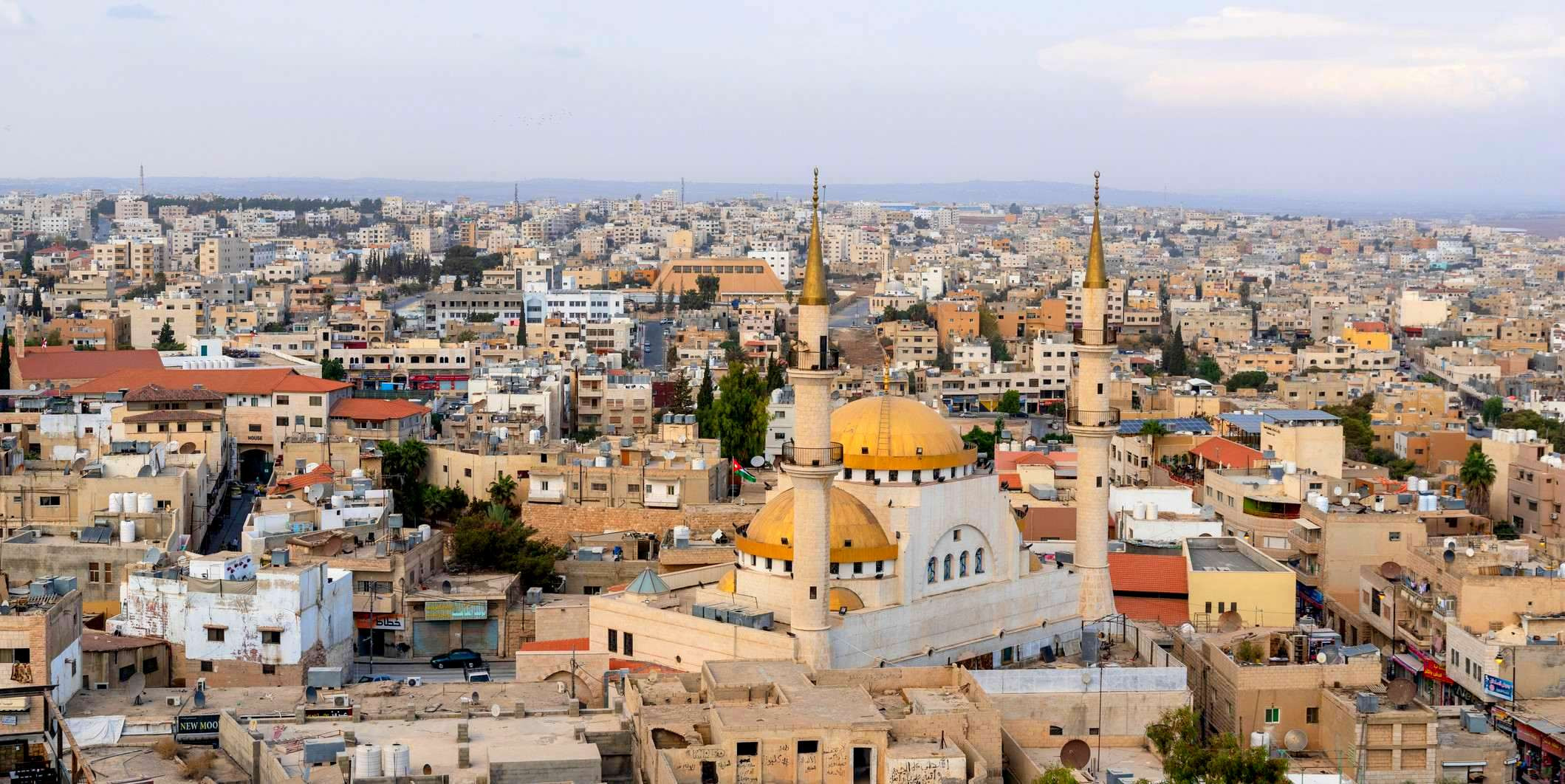
Key Highlights of Madaba
-
The Madaba Map: The centerpiece of Madaba's mosaic collection is the Madaba Map, located in the Church of Saint George. This 6th-century mosaic floor depicts an ancient cartographic representation of Jerusalem and other holy sites of the Middle East, providing valuable historical insights into the region’s geography during that era.
-
Archaeological Park & Museums: Madaba’s Archaeological Park contains ruins and restored 6th-century buildings. Visitors can explore multiple churches and villas with fine mosaic floors that showcase myths, daily life, and animals, offering a glimpse into the artistic and cultural lives of its ancient peoples.
-
Church of the Apostles: At the southern end of the city, this church features a remarkable mosaic floor depicting the Sea of Galilee and the Nile Delta, highlighting the artistic mastery of the ancient craftsmen of Madaba.
Cultural Experience in Madaba
-
Mosaic Workshops: Numerous workshops around Madaba allow visitors to see artisans at work, crafting mosaics using techniques passed down through generations. These workshops also offer hands-on experiences, where you can create your own mosaic to take home.
-
Madaba Institute for Mosaic Art and Restoration: This institute not only works to preserve Jordan's mosaic heritage but also teaches the ancient art of mosaic creation, helping to sustain this important cultural legacy.
Dining and Shopping
- Madaba is also a great place to enjoy Jordanian cuisine, with restaurants serving traditional dishes like mansaf and maqluba. Local markets offer a variety of regional handicrafts, including handmade mosaics and pottery, making it an ideal spot for picking up unique souvenirs.
Nearby Attractions
- Mount Nebo: Just a short drive from Madaba, Mount Nebo is where Moses is said to have viewed the Promised Land. It offers panoramic views of the Jordan Valley and the Dead Sea and features more exquisite mosaics in its memorial church.
Madaba’s rich mosaic heritage and its proximity to significant biblical sites make it a key destination for those interested in history, art, and religion. Its charming atmosphere and friendly locals provide a warm welcome to all who visit, making it a memorable stop in the heart of Jordan.
Irbid
Irbid, located in the northern part of Jordan, is a vibrant city known for its bustling cultural scene and educational institutions. Often referred to as the cultural capital of Jordan, Irbid is home to several universities, including Jordan University of Science and Technology, one of the most prestigious in the Middle East. This gives the city a youthful energy and a dynamic atmosphere that distinguishes it from many other cities in the region.
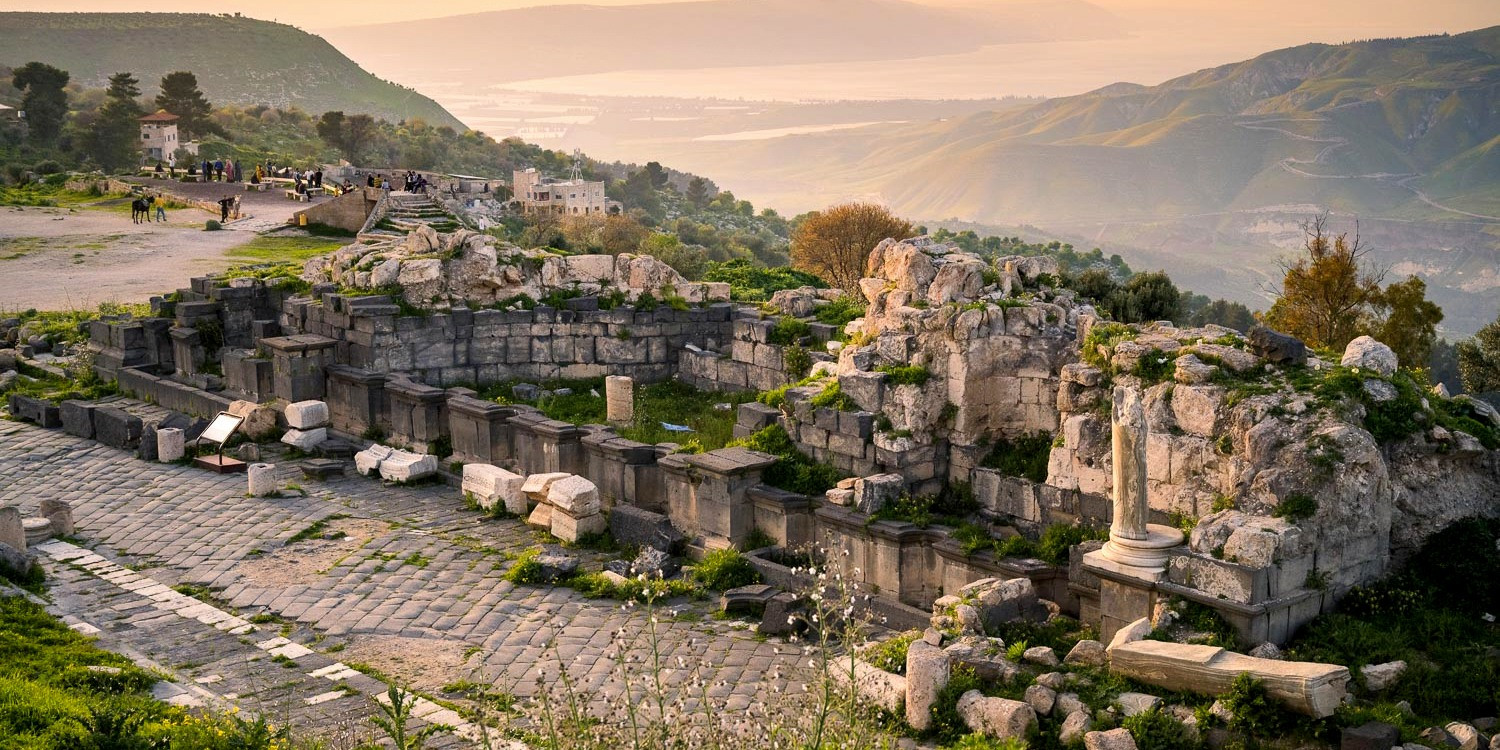
Key Highlights of Irbid
-
Irbid Archaeological Museum: Located on the campus of Yarmouk University, this museum houses an impressive collection of artifacts from the region, tracing its history from the Bronze Age to the Islamic era. The exhibits include pottery, glass, coins, and statues that offer insight into the area's rich past.
-
Islamic Scientific College Museum: Another significant cultural site in Irbid, this museum showcases Islamic scientific achievements, including astronomy, medicine, and engineering, highlighting the contributions of Muslim scholars over the centuries.
-
Asim bin Thabit Mosque: This historic mosque is named after a companion of the Prophet Muhammad and is one of the oldest mosques in Jordan, reflecting the deep-rooted Islamic culture of the area.
Cultural and Social Scene
-
Cultural Events and Festivals: Irbid hosts numerous cultural events throughout the year, including exhibitions, lectures, and performances that reflect the intellectual and artistic vibrancy of the city.
-
Cafés and Restaurants: The city's numerous cafés and restaurants are popular gathering spots for students and locals alike, offering a taste of Jordanian cuisine and hospitality. These venues also serve as cultural hubs where poetry readings, musical performances, and intellectual discussions take place.
Educational and Research Centers
-
Jordan University of Science and Technology (JUST): Known for its strong emphasis on research and science, JUST attracts students and scholars from across the region and around the world, adding to the city's diverse cultural landscape.
-
Yarmouk University: This comprehensive university is known for its faculties in arts and humanities, contributing significantly to the cultural life of Irbid and Jordan as a whole.
Nearby Attractions
- Umm Qais: Located near Irbid, Umm Qais offers panoramic views of the Sea of Galilee and the Golan Heights. The site is home to impressive ancient ruins, including those of the Decapolis city of Gadara, with its well-preserved Roman theatres, colonnaded streets, and baths.
Irbid’s blend of educational vigor, cultural richness, and historical depth makes it a unique and lively city to explore. Its universities not only fuel the local economy but also foster a cosmopolitan atmosphere that makes Irbid a focal point for cultural and intellectual exchanges in Jordan. Whether you're exploring its museums, attending a festival, or simply enjoying a coffee in one of its lively cafés, Irbid offers a refreshing glimpse into contemporary Jordanian life.
Salt
Salt, often referred to as Al-Salt, is an enchanting city in Jordan known for its well-preserved Ottoman-era architecture and a significant historical legacy that offers a glimpse into a bygone era. Situated just a short drive northwest of Amman, Salt has a distinct character that sets it apart from Jordan's other major cities, with its harmonious blend of Muslim and Christian communities adding to its cultural richness.
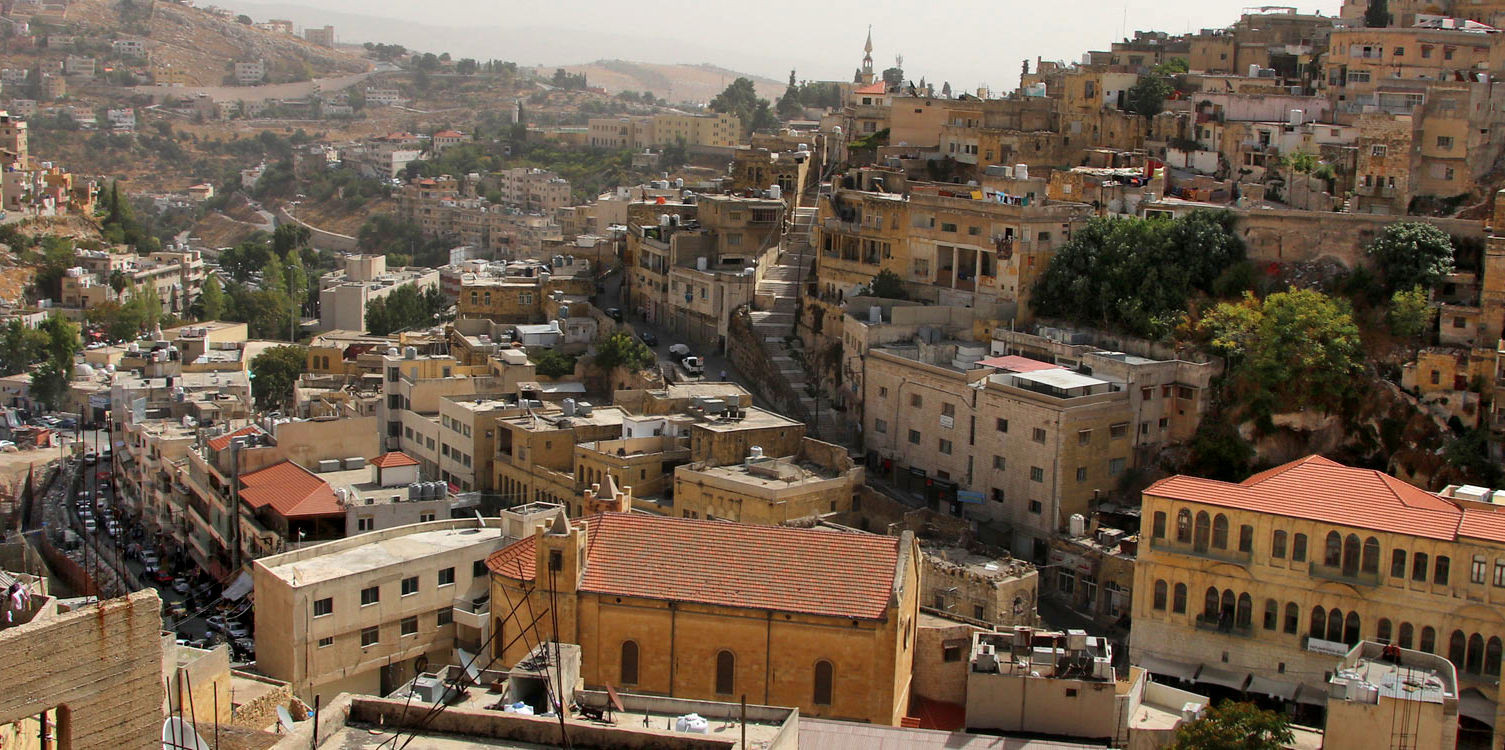
Key Highlights of Salt
-
Historic Old Town: Salt's old town is a delight for architecture enthusiasts and historians alike, featuring narrow winding streets lined with yellow limestone buildings. This area is undergoing efforts to achieve UNESCO World Heritage status, which speaks to its historical and architectural significance.
-
Salt Archaeological & Folklore Museum: Housed in a beautiful 19th-century mansion, this museum offers insights into the local history and culture with exhibits that include traditional costumes, pottery, and everyday artifacts that paint a picture of life in Salt across different eras.
-
Ottoman Architecture: The city is notable for its well-preserved Ottoman architecture. The Abu Jaber mansion, which dates back to the late 19th century and houses the Salt Archaeological & Folklore Museum, is renowned for its intricate brickwork and grandiose design, serving as a prime example of the prosperous period Salt enjoyed during the Ottoman Empire.
Cultural Experiences
-
Salt Heritage Tours: These guided tours are a fantastic way to explore the city's historical sites, learning about Salt’s past as an important trading link between the desert interior and the west. Visitors can delve into the stories of the ancient traders and craftsmen who shaped the region.
-
Community Engagement: The city's community projects often involve restoration works and cultural festivals that encourage tourist participation, offering a deeper connection with the local culture and its people.
Religious Significance
- Harmony of Faiths: Salt is known for its communal harmony, with Christian and Muslim communities living side by side. The city’s religious sites, such as the Al-Khader Orthodox Church and the Great Mosque, stand as testaments to its diverse religious heritage.
Nearby Attractions
-
Ain Plaza: At the heart of Salt, Ain Plaza is surrounded by traditional markets and old shops that give visitors a sense of the city’s bustling activity in times past.
-
Hammam Street: Known for its traditional bathhouses, this street offers a peek into the social life of Salt’s inhabitants, where bathhouses served as social and cultural meeting points.
Salt's rich tapestry of history, culture, and architecture makes it a must-visit for those interested in the more serene and contemplative aspects of Jordanian life. Its charming streets and the warmth of its people provide a welcoming atmosphere for all who come to explore its historical treasures.
Wadi Rum
Wadi Rum, also known as the Valley of the Moon, is one of Jordan's most extraordinary landscapes, renowned for its stunning desert vistas and unique geological formations. This protected area in southern Jordan captivates adventurers, historians, and filmmakers alike with its majestic sandstone mountains and ancient rock carvings. Wadi Rum is not just a natural wonder; it's also a cultural treasure trove, having been inhabited by many human cultures over thousands of years, including the Nabateans and the Bedouins who still maintain their nomadic lifestyle here today.
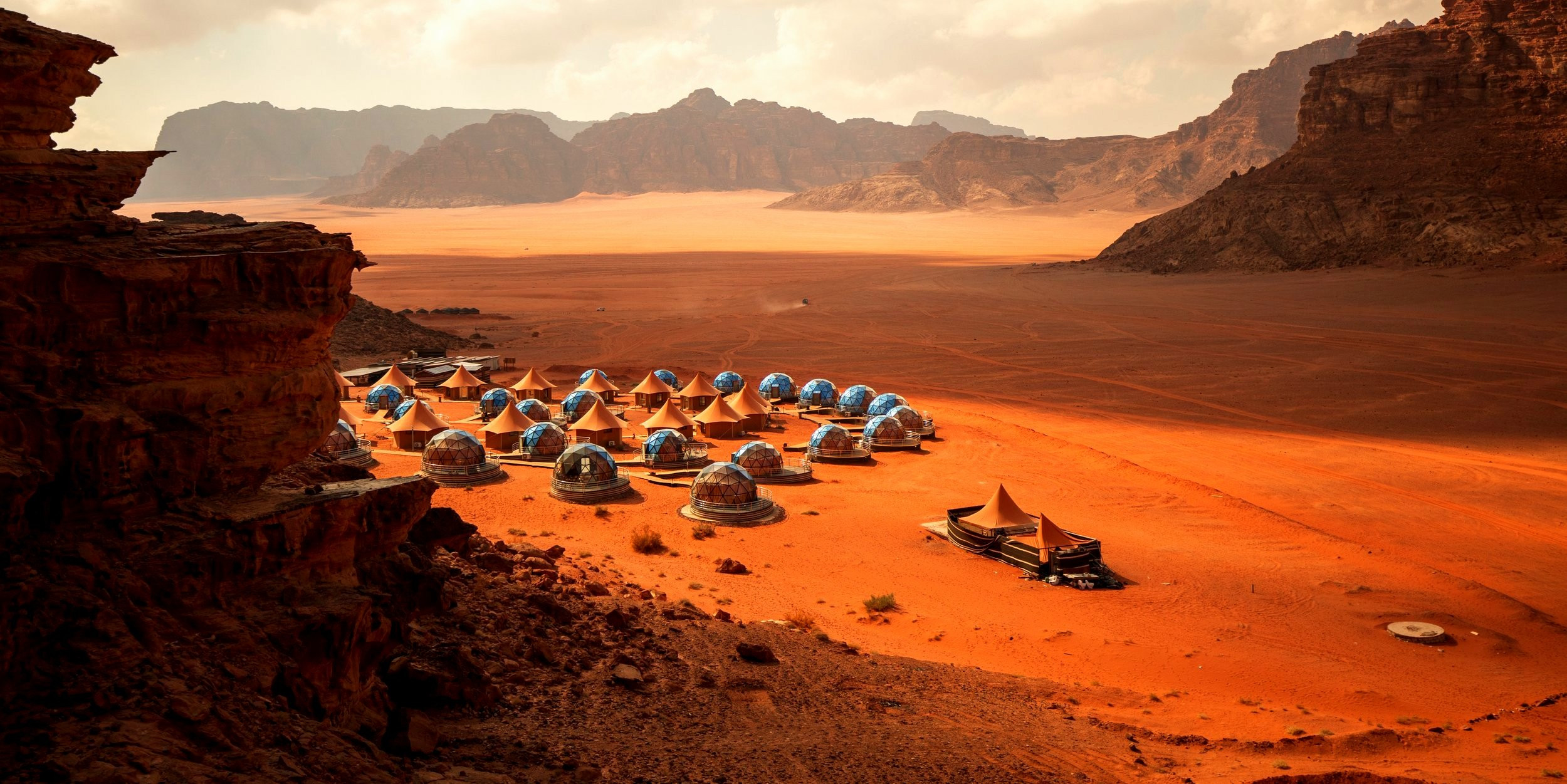
Key Highlights of Wadi Rum
-
Dramatic Landscapes: The desert features towering cliffs, massive sand dunes, narrow gorges, and natural arches. Its iconic red sands and stunning rock formations provide a surreal backdrop that feels almost otherworldly.
-
Rock Art and Inscriptions: Throughout Wadi Rum, there are numerous petroglyphs and inscriptions that date back to different eras, from prehistoric times through to the Islamic period. These artifacts provide fascinating insights into the lives of the area's ancient inhabitants.
-
Bedouin Culture: The local Bedouin tribes are integral to the region, offering visitors a glimpse into their traditional way of life through guided tours, overnight stays in Bedouin camps, and cultural experiences such as storytelling and traditional cooking.
Activities in Wadi Rum
-
Jeep Tours: One of the best ways to explore the vast landscape is by a 4x4 jeep tour, which can take you deep into the desert to areas that are otherwise inaccessible.
-
Camel Safaris: For a more traditional experience, camel safaris offer a slower pace that matches the timeless feel of the desert.
-
Hiking and Climbing: There are numerous hiking and climbing routes throughout Wadi Rum, ranging from easy walks to serious mountaineering challenges. Climbing the highest peaks like Jebel Rum or enjoying a less strenuous trek through one of the many scenic canyons are popular options.
-
Hot Air Balloon Flights: For a bird's eye view of the desert, hot air balloon flights provide spectacular panoramic views of Wadi Rum at sunrise.
-
Stargazing: Due to the absence of light pollution, the night skies in Wadi Rum are incredibly clear, making stargazing a popular activity. The Milky Way is often visible to the naked eye, and many camps offer telescopes for a closer look at the stars.
Wadi Rum is not just a location but a profound experience that offers both adventure and tranquility. Its breathtaking scenery and the enduring presence of the Bedouin culture make it a unique destination that resonates with anyone who visits. Whether you're exploring its historic sites, experiencing the thrill of an off-road ride, or simply enjoying the quiet and starry nights, Wadi Rum captures the essence of the Jordanian desert like no other place.
Tips for Popular Cities in Jordan
When planning a trip to Jordan, combining practical tips across different destinations can greatly enhance your experience. Here’s a streamlined guide to help you navigate the diverse settings you'll encounter:
General Travel Tips
-
Dress Modestly: Jordan is a conservative country, so dressing respectfully, especially at religious sites, is important.
-
Currency Considerations: The Jordanian Dinar (JOD) is the local currency. While credit cards are widely accepted, carrying some cash is useful for smaller purchases and tipping.
City Navigation
Historical Sites
-
Opt for sturdy, comfortable footwear due to extensive walking on uneven surfaces. Arriving early helps avoid crowds and the heat of midday.
-
Stay hydrated by carrying water, as options to purchase may be limited on-site.
Coastal Towns
-
Engage in water activities such as snorkeling or diving to explore vibrant coral reefs.
-
Use high SPF sunscreen, and wear hats and sunglasses to protect against the strong sun.
Cultural Exploration
Academic Hubs
-
Explore museums and cultural events, particularly around areas with educational institutions.
-
Frequent local cafés to mingle with residents and gain insights into contemporary local life.
Architectural Tours
- Participate in walking tours to appreciate historic architecture and support traditional craftsmanship by shopping at local artisan shops.
Desert Adventures
- Consider overnight stays in traditional camps to experience the desert's natural beauty during both sunset and sunrise, along with stargazing opportunities.
Prepare for temperature fluctuations by packing appropriate layers, especially for cooler evenings.
These tips are designed to help you navigate the rich tapestry of environments found in Jordan, ensuring a comprehensive and memorable travel experience.
Ideal Time for Popular Cities in Jordan
Choosing the ideal time to visit Jordan's popular cities can significantly enhance your travel experience, as weather and local events play a crucial role in accessibility and enjoyment. Here's a guide to the best times to visit Jordan's key destinations:
Spring (March to May)
-
General Overview: Spring is arguably the best time to visit Jordan due to mild temperatures and the landscape being lush and green after the winter rains. This season is ideal for exploring both cities and natural sites.
-
Activities: Hiking in nature reserves and visiting historical sites are particularly pleasant during this time. The spring also hosts various cultural festivals across the country.
Autumn (September to November)
-
General Overview: Autumn mirrors the conditions of spring with comfortable temperatures and fewer tourists compared to the high season. It's another perfect window for exploring the country’s diverse attractions.
-
Activities: Sightseeing in ancient cities, trekking in the desert, and enjoying late-night cultural events are all comfortable during these months.
Summer (June to August)
-
General Overview: Summers in Jordan can be very hot, especially in the desert areas and the Jordan Valley, including cities like Amman and Petra where temperatures can soar. However, coastal areas like Aqaba benefit from a milder climate that is suitable for beach activities.
-
Activities: This season is best for water-based activities in Aqaba like snorkeling and scuba diving. Early morning or late evening visits to archaeological sites are advisable to avoid the midday heat.
Winter (December to February)
-
General Overview: Winter can be quite cold, especially in the desert and in Amman, where temperatures can drop near freezing, and snow is not uncommon. However, winter is generally short and mild compared to many other parts of the world.
-
Activities: Sightseeing is still possible, though you'll need to bundle up. This season is less crowded, so you can enjoy a more peaceful experience at major tourist sites.
Timing your visit to coincide with the seasons not only ensures a comfortable journey but also offers different perspectives of Jordan’s natural beauty and cultural richness. Each season brings its own set of experiences, making Jordan a versatile destination to visit year-round.
Jordan's major cities provide a rich mixture of events that smoothly combine lively contemporary life with ancient past. From the breathtaking Petra and Jerash ruins to the lively Amman streets and the peaceful Wadi Rum deserts, every city has its own charm. While Jordan's warmth and welcome is year-round, perfect visiting times for nice weather are in spring and fall. A trip through Jordan offers a great many varied and unforgettable activities, whether one is visiting archaeological sites, diving into local traditions, or admiring natural scenery.
FAQs for Popular Cities in Jordan
Q: What is the best time to visit Jordan?
A: The best times to visit Jordan are during the spring (March to May) and fall (September to November) when the weather is mild and pleasant, ideal for outdoor activities and sightseeing.
Q: Is Jordan safe for tourists?
A: Yes, Jordan is generally very safe for tourists. It is politically stable and has low crime rates compared to many other countries. However, visitors should always stay informed of local news and follow standard safety precautions.
Q: What are the must-visit cities in Jordan?
A: Must-visit cities include Amman for its historical and cultural diversity, Petra for its archaeological significance, Aqaba for beach and water activities, and Jerash for well-preserved Roman ruins. Wadi Rum is also a must-visit for its stunning desert landscapes.
Q: Do I need a visa to visit Jordan?
A: Most nationalities require a visa to enter Jordan, which can be obtained on arrival at major airports and border crossings for many countries. However, it’s advisable to check the latest visa requirements from official resources or your local Jordanian embassy before traveling.
Q: What currency is used in Jordan?
A: The Jordanian Dinar (JOD) is the official currency. Credit cards are widely accepted in major cities and tourist locations, but it’s advisable to have some cash for smaller shops and rural areas.
Q: What language is spoken in Jordan?
A: Arabic is the official language of Jordan. English is widely spoken, especially in tourist areas, hotels, and among younger people and academics.
Q: What should I wear when visiting Jordan?
A: It's recommended to dress modestly, particularly when visiting religious sites and less touristy areas. In tourist resorts and hotels, Western dress norms are more acceptable.
Q: Can I drink alcohol in Jordan?
A: Yes, alcohol is available in hotels, bars, and designated shops. However, public intoxication is frowned upon, and drinking alcohol in public places outside these areas is generally not permitted.
Q: What are the culinary specialties of Jordan?
A: Jordanian cuisine features dishes like mansaf (the national dish of lamb cooked in fermented dried yogurt and served with rice), falafel, hummus, and maqluba. Be sure to try traditional sweets like knafeh.
Q: How should I get around in Jordan?
A: Renting a car is a popular option for flexibility. Taxis and ride-sharing apps like Uber and Careem are widely available in larger cities. For longer distances between cities, comfortable and affordable bus services are available.
For the Nepal tour, please click here.
If you are looking for different kinds of Nepal Tours or Trekking Packages, feel free to contact us.
